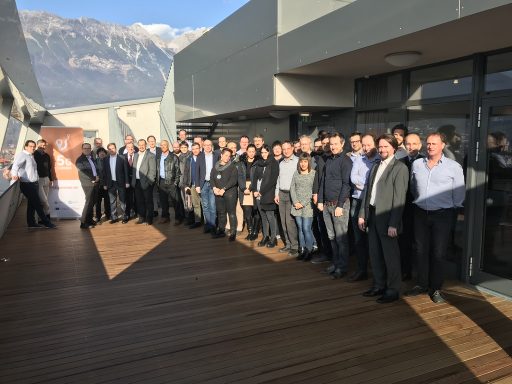The 5G-CARMEN. A digital corridor for the mobility of the future is kicking off
Funded with € 18.5 million, the mobility project based on 5G technology concerns the "Bologna to Munich corridor" and is coordinated by Trento-based Fondazione Bruno Kessler. The kick-off meeting was held on November 21st and 22nd in Innsbruck, Austria.
Designing and developing a 5G digital corridor for the connected and automated mobility of the future on European roads. This is the goal of 5G-CARMEN which has just obtained a total funding of 18.5 million Euros: 14.9 from the European Union, as part of the Horizon 2020 program for research and innovation, and the rest from the industrial partners of the project.
The official green light to the works was given at the kick off meeting between the project partners coordinated by Roberto Riggio, head of the WiN Research Unit at Fondazione Bruno Kessler’s CREATE-NET Center that was held in Innsbruck on November 21st and 22nd.
“The 5G-CARMEN project”, Riggio explains, “is aimed at obtaining positive effects in social, environmental and commercial terms. We met in Innsbruck, the center of gravity of the corridor that will stretch from Bologna to Munich, for the kick-off meeting with our academic and industrial partners. The next steps will be the discussion of the use cases that will be validated on the Munich-Bologna corridor“.
Safety, traffic sustainability, environment protection aspects, these are just a few of the many challenges that will be addressed by this challenging project. More specifically, in the context of the 5G-CARMEN project, a number of 5G technologies will be installed and validated in selected areas of the corridor and in border areas. The project will cover 600 km of roads across three countries (Italy, Austria and Germany), along the “Munich-Bologna corridor”, one of the most important corridors identified by the European Union to improve the mobility of people and goods throughout Europe.
The key factor will be the 5G technology that will allow the current mobile radio network to evolve in order to obtain a better response to the needs of services in terms of speed of data exchanged and response times of the network infrastructure, which must be lower than a millisecond, for the implementation of next-generation connected, cooperative and automated vehicles.
Globally recognized for its expertise in the field of Information and Telecommunication Technologies, Fondazione Bruno Kessler will lead, for the next three years, a consortium of 25 relevant industrial, academic and research organizations that will cooperate on the project:

Industrial partners:
· Autostrada del Brennero (Italy)
· BMW Group (Germany)
· Deutsche Telekom (Germany)
· FCA-CRF (Italy)
· INWIT (Italy)
· NEC (Germany)
· Nokia (Germany)
· Qualcomm (Germany)
· SWARCO (Italy)
· TIM (Italy)
· T-Mobile (Austria)
Small and medium sized enterprises:
· CommAgility (UK)
· CyberLens (The Netherlands)
· DriveSec (Italy)
· Eight Bells (Cyprus)
· WINGS ICT Solutions (Greece)
Universities/Research organizations:
· Fondazione Bruno Kessler (Italy) – coordinatore
· Associazione PIIU (Italy)
· CEA-LETI (France)
· CNIT(Italy),
· IMEC (Belgium)
· Libera Università di Bolzano (Italy)
· Universitat Politècnica de Valencia (Spain)
· Virtual Vehicle (Austria)
· High Tech Marketing (Austria)

